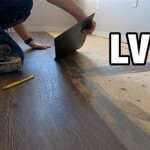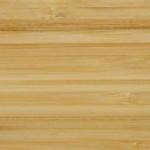Installing Laminate Wood Flooring Over Concrete: A Comprehensive Guide
Installing laminate wood flooring over concrete can elevate the aesthetics and functionality of your home. While it may seem daunting, with proper preparation and execution, you can achieve a professional-looking result. Here's a comprehensive guide to help you navigate the process seamlessly:
1. Preparing the Concrete Surface
A stable and smooth concrete foundation is crucial for successful flooring installation. Begin by thoroughly cleaning the concrete to remove any dust, debris, or contaminants. Check for any imperfections, such as cracks or unevenness, and repair them using a concrete patching compound. Ensure the concrete is dry and free of moisture before proceeding.
2. Installing the Underlayment
An underlayment serves as a moisture barrier and provides insulation. Roll out the underlayment perpendicular to the direction of the laminate planks, overlapping the joints by about 6 inches. Use a utility knife to trim any excess underlayment around the perimeter of the room.
3. Acclimating the Laminate Planks
Laminate planks need to acclimate to the room's temperature and humidity level before installation. Unpack the planks and stack them in the room for at least 48 hours before beginning the installation process. This will help prevent buckling or warping later on.
4. Starting the Installation
Start the installation along the longest wall in the room. Use spacers around the perimeter of the room to maintain an even gap between the wall and the flooring. The first row of planks should be locked together at a 45-degree angle, then snapped down into place. Continue installing the planks in a staggered pattern, avoiding long, parallel seams.
5. Cutting and Fitting Planks
Measure and cut any planks that need to be trimmed to fit. Use a miter saw for precise cuts. For planks that will be installed around obstacles, such as pipes or door frames, create templates using cardboard or scrap wood. This will ensure a perfect fit.
6. Installing Moldings and Transitions
Once all the planks are installed, you can install baseboards, moldings, and transitions to conceal any gaps or create a seamless transition between different flooring types. Use a caulk gun to fill any gaps between the flooring and the walls.
7. Cleaning and Maintenance
After installation, sweep or vacuum the flooring to remove any excess debris. Laminate flooring is generally low-maintenance, but regular cleaning with a damp mop is recommended to preserve its appearance. Avoid using harsh chemicals or abrasive cleaners that could damage the finish.
Additional Tips:
- Use a moisture barrier to protect the flooring from moisture seepage from the concrete.
- Allow the adhesive to dry completely before walking on the floor.
- Use a tapping block and hammer to ensure the planks are firmly locked together.
- Do not drag heavy furniture or sharp objects across the flooring to prevent scratches or dents.
- Consider using a rug to protect high-traffic areas or prevent scratches from pet nails.

Installing Wood Flooring Over Concrete Diy

Installing Laminate Flooring Over Concrete The Ultimate Guide Aa Floors

Laminate Flooring On Concrete Basement Floors Expert Installation Guide Csg Renovation

How To Install Vinyl Or Laminate Floors In A Basement Over Concrete Slab

How To Install Laminate Over Concrete Day 1

How To Install Laminate Flooring Over Concrete

How To Install Laminate Over Concrete Day 1
Can You Put Wood Flooring Over A Concrete Slab Instead Of Using Cement Board Quora

How To Lay Laminate Flooring On Concrete Howtospecialist Build Step By Diy Plans Laying Installing

How To Install Laminate Flooring On Concrete Making Maanita
Related Posts








